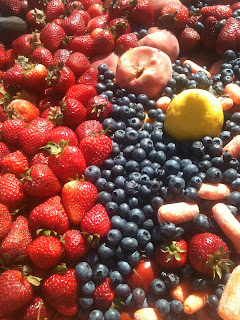I've been working with my power rake to do some contouring of the land and using it to form a swale. The power rakes sure are nice for some stuff, but they're expensive. I got mine at auction a couple of years ago for a few thousand dollars -- specifically for rehabbing pastures, like this one.
This is at the north end of the pasture. I've contoured the entire pasture to drain in this direction; its about 400' long, and the drop from one end to the other is about 4', so the overall slope is a pretty gentle 1%, which for most purposes is flat.It's a little hard to see, but what I've been doing with the harley rake is using it to move the dirt and mound it up a little on the left side of this picture.
At this point I've probably moved 18" of dirt, which is hard to see, but the goal is to have a raised area on the left side that will be planted and permanently maintained as a green filter, and form a swale in the center.
The post and pipe in the foreground is an improvement that I put in since I was going to be working this ground anyways. Might as well do all of the digging and dirt prep at once. Having a frost-proof faucet allows me to avoid carrying water for pastured birds -- which is one of the uses of this particular bit of ground.
While I'm doing this I'm also removing rocks and debris and leaving a pretty nice seed bed. It'll be pretty smooth when its done for the most part.
A couple of passes later and I'm getting pretty close to my goal.
And that's about it. The area I've designated as a swale is 200' long and about 30' wide, with the deepest area being about 24" -- that is, the dirt mounded on the left side is 24" taller than the lowest point. I'm providing that much water capacity to be able to handle the runoff from a major storm, or several storms, and to filter the water that's generated through the soil.
It's not all altruism. The manure and runoff from the fields contains nutrients and fertilizer that I don't want to lose, and I certainly don't want the soil to be lost to erosion if there's ever bare dirt. A swale allows that dirt to settle out and kept on the property.
The soil test says that I need 3 tons of lime per acre to bring the acidity to pasture or some row crops, and I'll be applying that tomorrow, along with the grass seed. By next May or June I should have a very nice, perfectly level pasture with good stormwater handling built in.










































